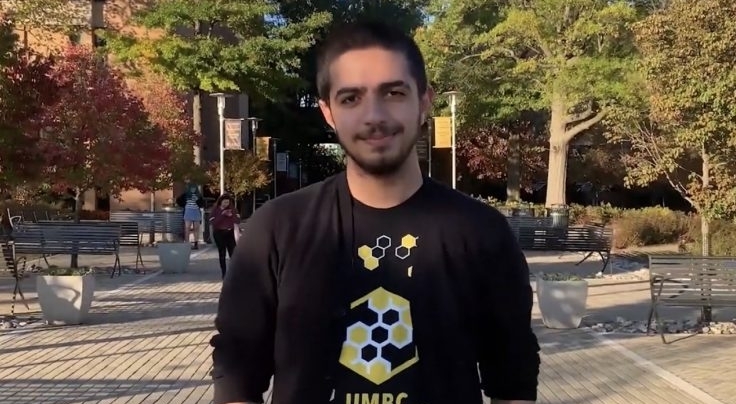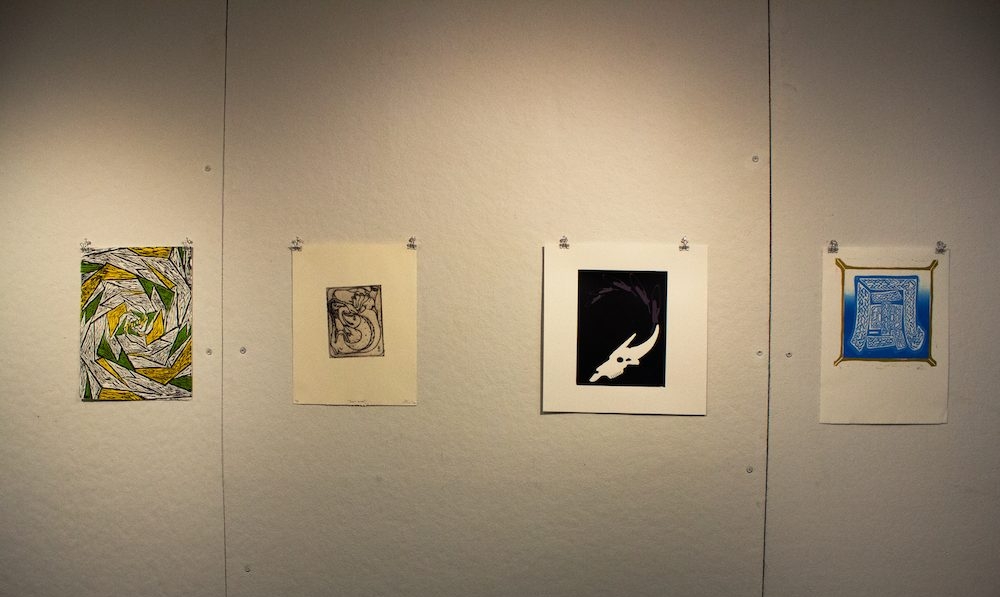When she arrived at Standing Rock, North Dakota, she believed she would be performing menial tasks which in some way would aid in the cause of protesting the Dakota Access Pipeline. She was wrong. And she had no way of foreseeing the lethal dangers that laid ahead, the flash bang grenades, tear gas and water canons which would later rain down on her and her fellow protestors – self-proclaimed “water protectors.”
Her name is Freyja Anders and she worked for UMBC in the event planning office from 2007 to 2009. She describes herself as a bluegrass singer, community theater actor, camping enthusiast, occasional cosplay nerd, gardening novice and clay potter. Yet none of those hobbies directly correlate with the building of an underground oil pipeline 1,500 miles away from Baltimore.
However, when Anders saw videos posted online by protestors at the camp in Standing Rock, she knew she had to help.
“I saw videos of people praying, then being attacked. I saw clergy from all over the world being arrested. I saw a disturbing disregard for human life at the hands of bureaus of our society designed to protect,” she explained. And so she left home, North Dakota-bound and eager to support the cause.
She arrived at Standing Rock on Nov. 18. The sun was seemingly obscured by a tattered blanket of clouds, the wind ferocious and fast and the temperature bitingly cold – a high of 36 degrees and a low of 21. This chilling condition was not catastrophic when she arrived, although perhaps bothersome. Two days later, though, it would jeopardize survival.
Around 6 p.m. on Nov. 20, protestors attempted to remove two burned-out military vehicles that had been obstructing the Backwater Bridge since October – the last time protestors and law enforcement engaged in confrontation there. Other barriers were set up along the bridge, which protestors claim prevented emergency services and other forms of relief from reaching their camp.
According to Anders, police began using crowd dispersal techniques when protestors approached the barrier and spoke out against the construction of the Dakota Access Pipeline.
“I was walking on the bridge approaching the barrier with Lee Sprague and other members of the Michigan Canoe Cold Water Rescue Team when a flash bang grenade landed in front of us. To avoid serious injury, a member of our team kicked it off the bridge away from the rest of the civilian crowd,” she said.
This incident took place just before sundown. It was merely the tip of the iceberg, an indication that much more was in store that night for Anders and her fellow demonstrators.
The situation began to escalate as tensions rose. Police began to sporadically fire flash bang grenades and tear gas canisters into the unprepared crowd. Anders, along with a couple others, rushed back to camp to gather crude protective equipment: shields, eye masks and even the top of a cooler.
“When we got back to the bridge we were rushing shields to the front line and intercepted a young man stumbling with a head wound and he was quickly put in a truck and taken to the medical encampment for further evaluation. That was when they broke out the water cannons,” she said.
According to AccuWeather, the high temperature on Nov. 20 in Standing Rock was 34 degrees. The low temperature was 19 degrees.
Anders began making trips back to camp, this time seeking equipment that could prevent hypothermia from setting in. She gathered ponchos, goggles, shields and tarps. A nearby donation center was providing them with dry clothing – a necessary commodity given the perpetual barrage of pressurized water. Anders and other aides frantically worked to change people out of their clothes, which were not dripping wet, but rather stiff and frozen.
“We were practically stripping people in public, in the wind, in the cold, in the dark, just so we could keep them from a hypothermic event. That’s how serious it was,” she recalled.
A decision was eventually made to set up three triage fires to aid with safety efforts. As protestors huddled around the temporary sources of warmth, Anders could see large steam clouds bloom from the thawing clothing. Using its cannons, police were able to extinguish one of the three fires.
Though no fatalities occurred that night, numerous injuries were sustained. “Concussions, permanent nerve damage, respiratory problems, eye damage, cardiac arrest, head- back- and limb injuries from being shot with rubber bullets and concussion grenades,” Anders described.
“After that night, the team realized that the water rescue mission had now expanded to the land.”
The camp’s protestors learned a hard lesson from that night. They have now developed effective systems for treating mass-hypothermia and conduct routine drills to prepare for an array of emergency situations. The camp is more organized than people think, Anders said, and they have no plans of going anywhere anytime soon.
On Jan. 24, President Donald Trump signed executive actions to propel the construction of the Dakota Access Pipeline, voiding recent President Barack Obama’s actions to prevent it.
“I keep hearing questions, hearing that folks are really confused about why everyone is still here. But the answer is simple. The Dakota Access Pipeline must be stopped, for all our sakes and it hasn’t yet. There is tenacity here and if the blizzards, snow drifts and -40 wind chill hasn’t scared everyone off at this point, not much will.”

